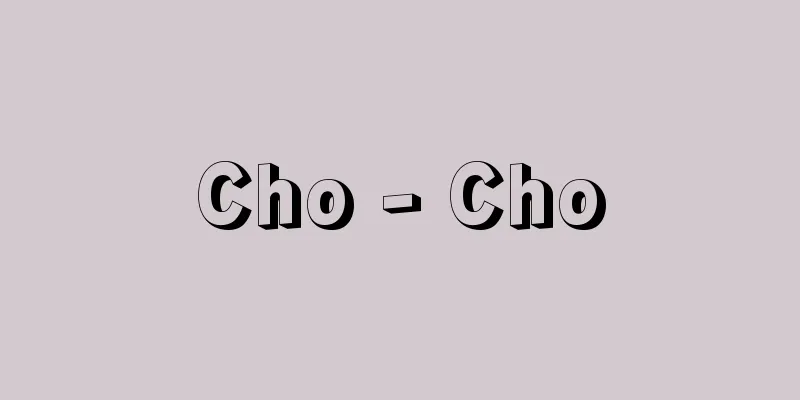Sākhya School

|
One of the six schools of Indian philosophy. In Chinese, it is called numerology. The word sānkhya is derived from sakhyā, which means number or contemplation, and is interpreted as a number of 25 principles that explain the mind, body, and world, or as contemplation of the true self. It is closely related to the Yoga school. Legend has it that the founder of this school was Kapila. The distinctive features of this philosophy are its dualistic thinking that distinguishes the pure soul from the elements of the world and the mind, body, and mind, and its enumeration of principles. This philosophy was gradually recognized in the middle and late Buddhist Upanishads (books such as the Kathā, Śvetaśvatara, and Maitri), and the great epic poem Mahabharata and long Buddhist texts also refer to various theories of sānkhya. The Buddhist poet Memyo (c. 2nd century) also mentioned it in his Praise of the Actions of the Buddha. The existence of this school is known from the Arthashastra (Treatise on Real Benefits), written around the 4th century BCE, which lists Samkhya as the first philosophy, but there were many different theories. The Samkhya Kalika (Gatha on Numbers), which summarized the theory by Ishvarakrishna around the 5th century CE, became a basic textbook. Nine commentaries on it remain. Among them, the Seventy Golden Treatises was translated into Chinese by Zhenji, who came to China in 546, and has also been studied in Japan. There are Japanese translations of Gaudapada's commentary, Matara's commentary, and Bhachaspati Mishra's (9th century) commentary (Tattva Kaumudi). However, the most important commentary is probably the Yuktidipika. Other works of this school include the Tattva-samasa and the Samkhya-sūtra (Sutra on Numbers), each with several commentaries. The former is only a short work of about sixty words, even if it dates back to the 8th century. The latter is a work of 526 short sentences, and the annotated works by Aniruddha (c. 1500) and Vijñānabhikshū (16th century) indicate a lower limit on its date. The philosophy of this school explains the creation and transformation of the world, and through an analysis of human existence, shows the possibility of liberation. First, the body, mind, and world develop from the fundamental material cause and are dissolved within it. From the fundamental cause Prakriti, awareness arises, from awareness, patience arises, and from patience, on the one hand, the will, the five sense organs, and the five organs of action arise, and on the other hand, the five subtle elements arise, from which the five gross elements (earth, water, fire, wind, and space) arise. Prakriti, the cause, and the 23 principles, the effects, are both of the same nature, consisting of three elements: pure, passionate, and dark. The action of these three elements explains the development (transformation) of the various principles and the state of the natural world and the body and mind. On the other hand, each person has an independent soul, Purusha (spiritual self), which transcends this causality and simply observes the body and mind, which are the product of Prakriti. It teaches that complete liberation can be attained after death by realizing that the spiritual self is separate from the body and mind. [Murakami Makoto] "Introduction to the Sankhya Philosophical System" by Yamaguchi Keisho (1964, Apollonsha) " ▽ "Development of the Sankhya Philosophical System" by Yamaguchi Keisho (1974, Apollonsha)" ▽ "Studies in Sankhya Philosophy" by Murakami Shinkan (1978, Shunjusha)" ▽ "Philosophy of Sankhya" by Murakami Shinkan (1982, Heirakuji Shoten) " ▽ "Studies in Sankhya Philosophy, volumes 1 and 2, by Honda Kei (1980, 1981, Shunjusha)" ▽ "Studies in Sankhya Philosophy" by Nakamura Ryoaki (1982, Daito Shuppansha)" ▽ "Moonlight of Truth" by Kanakura Ensho (1984, Kodansha)" [Reference Items] | | |Source: Shogakukan Encyclopedia Nipponica About Encyclopedia Nipponica Information | Legend |
|
インド六派哲学の一つ。漢訳では数論(すろん)。サーンキヤとは、数または熟考を意味するサンキヤーsakhyāから導かれ、25原理を数えて身心と世界を説明する、または真の自己に関する熟考の意味に解される。ヨーガ学派と密接な関係がある。伝説上この学派の開祖はカピラという。この思想の特色は、純粋の霊魂を世界や身心の諸要素から区別する二元論的思考と、諸原理の列挙にある。このような思想は仏教以後の中期や後期の古ウパニシャッド(『カタ』『シュベーターシュバタラ』『マイトリ』などの書)に漸次認められ、大叙事詩『マハーバーラタ』も、長期にわたる仏教文献も種々のサーンキヤ説に言及している。仏教詩人馬鳴(めみょう)(2世紀ころ)も『仏所行讃(ぶっしょぎょうさん)』でそれに触れている。この学派の存在は、紀元前4世紀ころの『アルタ・シャーストラ』(実利論)が哲学の第一にサーンキヤをあげていることからも知られるが、多くの異説も存在した。紀元5世紀ころイーシュバラクリシュナが学説を要約した『サーンキヤ・カーリカー』(数論偈(すろんげ))は、基本的教科書となった。これには9種の注釈書が現存する。そのなかの『金七十論(きんしちじゅうろん)』は546年に中国に渡来した真諦(しんだい)によって漢訳されたもので、日本でも研究されてきた。ガウダパーダの注釈、マータラの注釈、バーチャスパティ・ミシュラ(9世紀)の注釈(『タットバ・カウムディー』)には邦訳もある。しかし重要な注釈は『ユクティディーピカー』であろう。この学派にはほかに『タットバ・サマーサ』と『サーンキヤ・スートラ』(数論経)とがあり、それぞれ数種の注釈を伴っている。前者はその成立が8世紀をさかのぼるにしても六十数語からなる小品にすぎない。後者は526の短文からなり、それに注釈を施したアニルッダ(1500年ころ)とビジュニャーナビクシュ(16世紀)の存在が、その下限年代を示す。 この学派の哲学は、世界の生成転変を説明するとともに、人間存在の分析を通して、解脱(げだつ)の可能性を示す。まず身心や世界は物質的な根本原因から展開し、またそのなかに解消する。根本原因プラクリティから覚(かく)が生じ、覚より我慢(がまん)が生じ、我慢より一方に意と五感器官と五行為器官が生じ、他方、五微細元素が生じ、それより五粗大元素(地水火風空)が生ずる。因であるプラクリティも果である23原理もともに同質であって、純質・激質・闇質(あんしつ)の3要素からなる。この3要素の作用によって、諸原理の展開(転変)と、自然界や身心の状態が説明される。一方この因果を超越し、単にプラクリティの所産たる身心を眺める独立の霊魂プルシャ(霊我)が各自に存在する。霊我が身心とは別であることを自覚することによって死後に完全な解脱を得ると説く。 [村上真完] 『山口恵照著『サーンキヤ哲学体系序説』(1964・あぽろん社)』▽『山口恵照著『サーンキヤ哲学体系の展開』(1974・あぽろん社)』▽『村上真完著『サーンクヤ哲学研究』(1978・春秋社)』▽『村上真完著『サーンクヤの哲学』(1982・平楽寺書店)』▽『本多恵著『サーンキヤ哲学研究』上下(1980、81・春秋社)』▽『中村了昭著『サーンクヤ哲学の研究』(1982・大東出版社)』▽『金倉圓照著『真理の月光』(1984・講談社)』 [参照項目] | | |出典 小学館 日本大百科全書(ニッポニカ)日本大百科全書(ニッポニカ)について 情報 | 凡例 |
>>: Sangihe [Islands] - Sangihe
Recommend
Noriaki Ota - Ota Jomyo
1222-1283 A samurai of the Kamakura period. Born ...
Round-about trade
This refers to trade that is conducted in a round...
"Katsuragi Town History: Ancient and Medieval Historical Materials" - Katsuragi Town History: Ancient and Medieval Historical Materials
...For this reason, it is difficult to grasp the ...
Conflict - Funso (English spelling) conflict
Conflict refers to a dispute, and is found in a w...
Gomashijimi (English name) scar large blue
A butterfly belonging to the order Lepidoptera an...
Sodium metaborate
...Industrial uses include flux for metal brazing...
Paleosuchus palpebrosus (English spelling) Paleosuchuspalpebrosus
...The broad-lipped caiman C. latirostris (total ...
Monotonous labor - Tanchouroudou
It refers to work that is extremely repetitive in ...
Intensive plan - Intensive plan (English)
An architectural plan that is centered in one plac...
Seven-word poem - Shichigonshi
A general term for classical Chinese poetry, each...
Tehran Conference
A tripartite summit meeting between the US, the U...
Six National Histories - Rikkokushi
A general term for six national histories compile...
Kappa Marries Into a Baby - Kappa Mukōiri
...Comparing this "Monkey Bride" with t...
Kingdom of Benin
Benin was founded in the 14th century in the trop...
Mine - Kozan (English spelling) mine
A general term for a business that extracts usefu...









